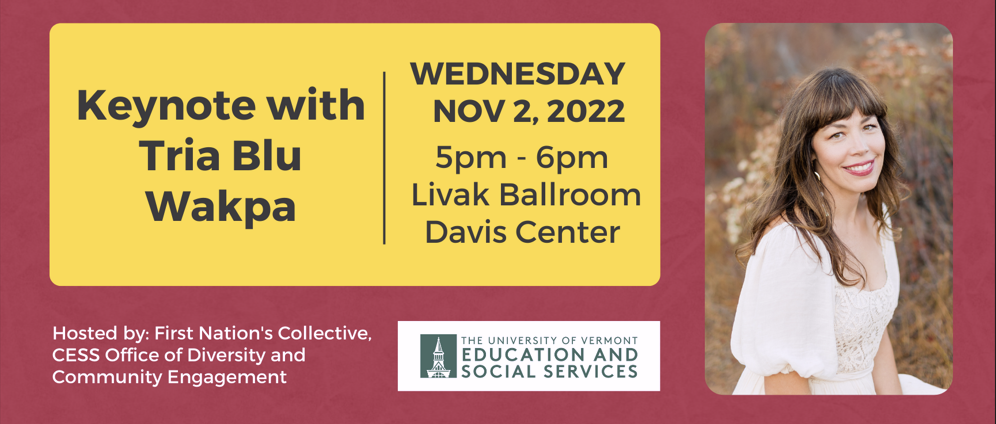Combating Settler Colonial Injustice: Performativity, Possibility, and Land Acknowledgements in Academia

The First Nations Collective located in the College of Education and Social Services invites you to the following presentation with keynote speaker, Dr. Tria Blu Wakpa:
Combating Settler Colonial Injustice: Performativity, Possibility,
and Land Acknowledgements in Academia
Wednesday, November 2, 2022
5-6PM
Davis Center, Livak Ballroom
At the intersection of dance, performance, and Indigenous studies, this talk, which is based on an article co-written with Sammy Roth, reflects on how an assistant professor at the University of California, Los Angeles–with the support of a graduate student researcher–has aimed to put an Indigenous land acknowledgment into praxis through community-engaged work. Indigenous land acknowledgements can be important because they directly combat the injustice of settler-capitalist, mainstream discourses that often obscure Indigenous peoples and practices and/or relegate them to the historic past. Yet, Indigenous people and Indigenous studies scholars also have critiqued non-Native land acknowledgements as “performative.” That is, without direct material benefits to Indigenous peoples, land acknowledgements can serve as empty gestures that “perform” university commitments to anti-racism, equity, diversity, and inclusion. In contrast to “performative” as an empty gesture, the fields of performance and dance studies frequently theorize “performativity” as a material action in the world, which can function both hegemonically and subversively. This talk argues that community-engaged research, teaching, and service are key ways to begin or further the process of putting a university’s land acknowledgment into action.
Tria Blu Wakpa is an Assistant Professor in the Department of World Arts and Cultures/Dance at the University of California, Los Angeles. She is a scholar, poet, and practitioner of Indigenous dance, Indigenous sign language, martial arts, and yoga. Her first book project, Bodies as Battlegrounds, Institutions as War: Native American Choreographies in Confinement, historically and politically contextualizes movement practices at four sites on Lakota lands: a former Indian boarding school, men and women’s prisons, and a tribal juvenile hall.


